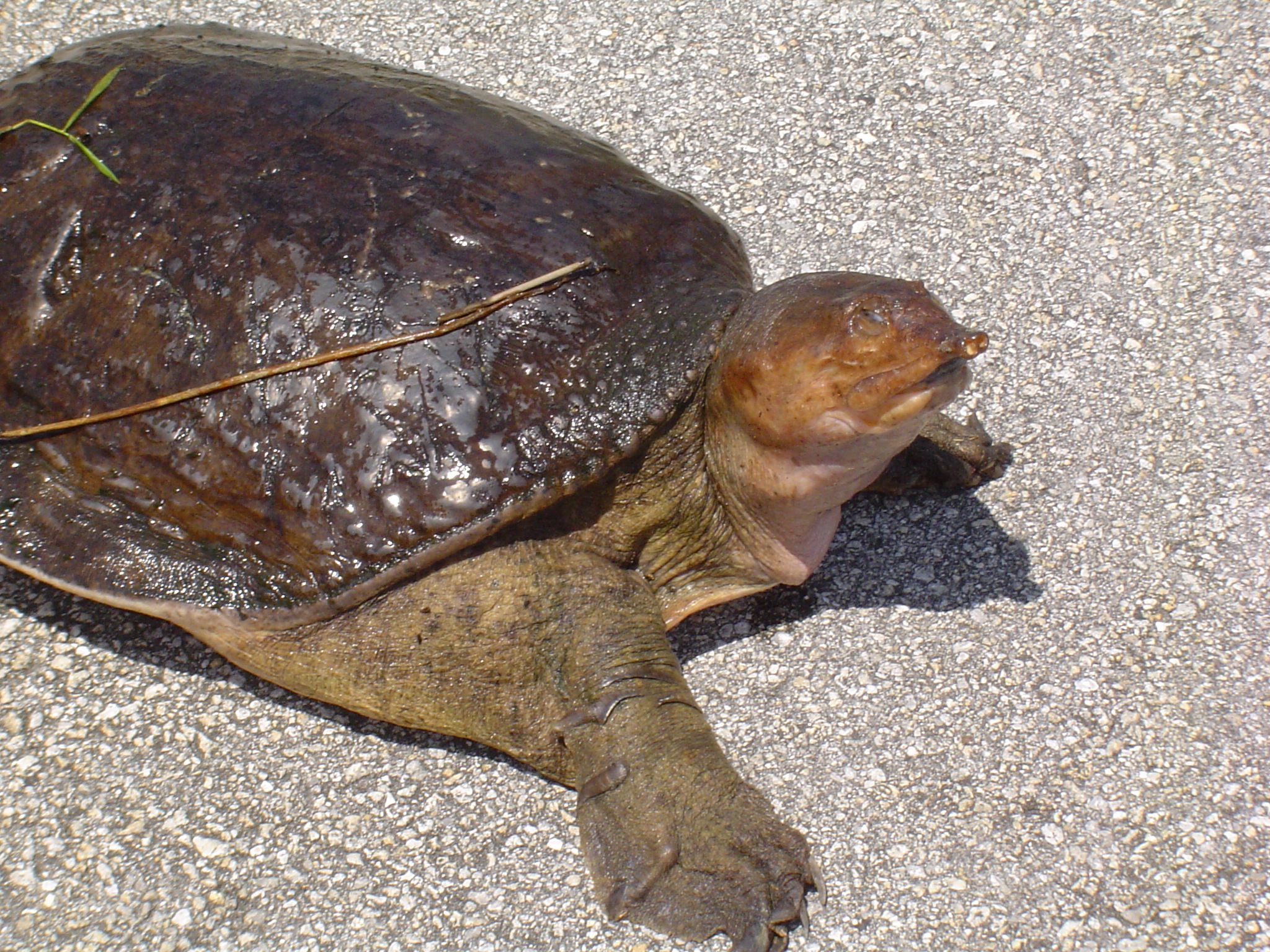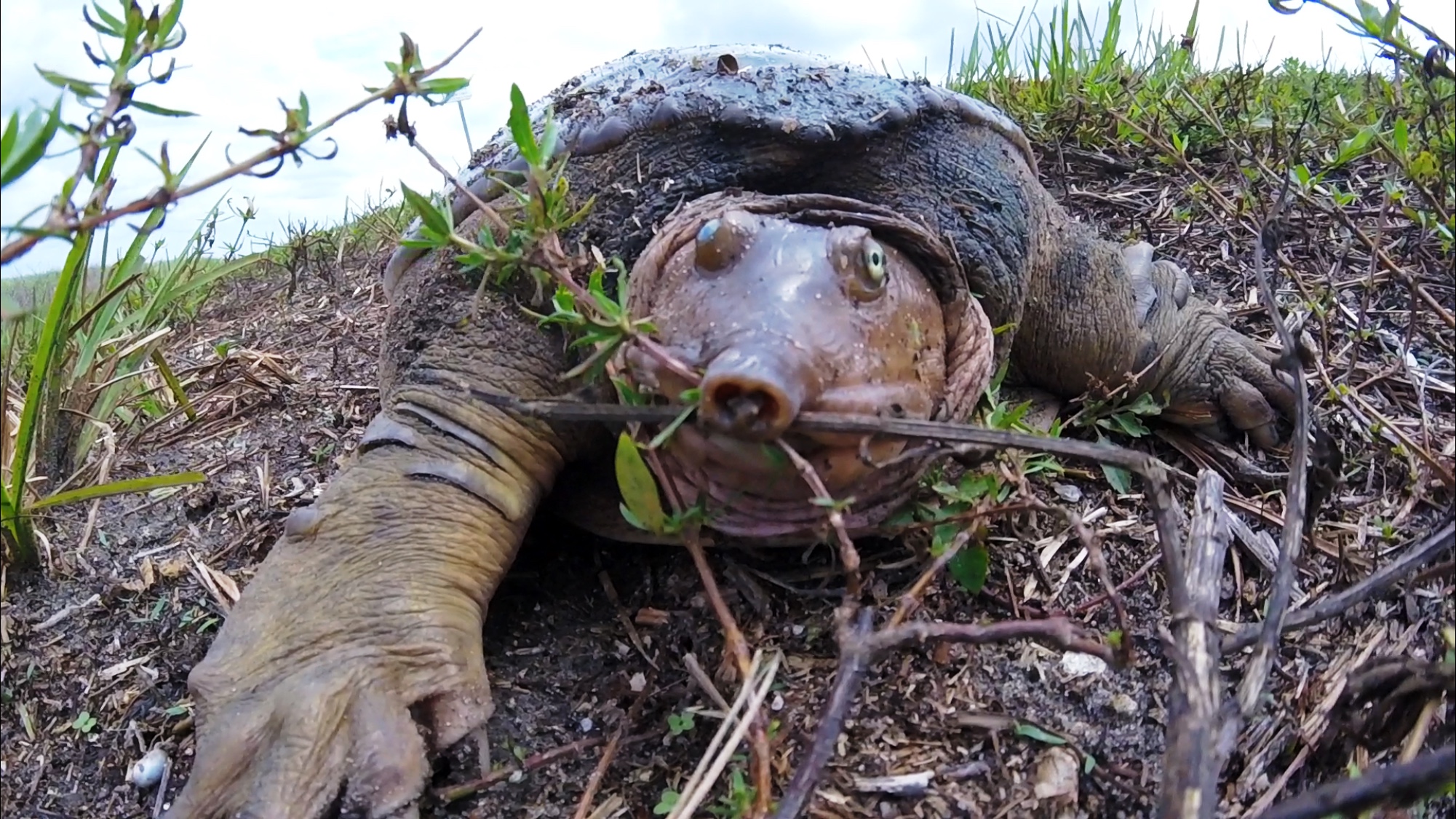Softshell Turtle
The Trionychidae are a taxonomic family of a number of turtle genera commonly known as softshells. They are also sometimes called pancake turtles (although they are distinct from the pancake tortoise). Softshells include some of the world's largest freshwater turtles, though many can adapt to living in highly brackish areas. Members of this family occur in Africa, Asia, and North America. Most species have traditionally been included in the genus Trionyx, but the vast majority have since been moved to other genera. Among these are the North American Apalone softshells that were placed in Trionyx until 1987.
They are called "softshell" because their carapaces lack horny scutes (scales), though the spiny softshell, Apalone spinifera, does have some scale-like projections, hence its name. The carapace is leathery and pliable, particularly at the sides. The central part of the carapace has a layer of solid bone beneath it, as in other turtles, but this is absent at the outer edges. Some species also have dermal bones in the plastron, but these are not attached to the bones of the shell. The light and flexible shell of these turtles allows them to move more easily in open water, or in muddy lake bottoms. Having a soft shell also allows them to move much faster on land than most turtles. Their feet are webbed and are three-clawed, hence the family name "Trionychidae," which means "three-clawed." The carapace color of each type of softshell turtle tends to match the sand and/or mud color of its geographical region, assisting in their "lie and wait" feeding methodology.
Females can grow up to several feet in carapace diameter, while males stay much smaller; this is their main form of sexual dimorphism. Pelochelys cantorii, found in southeastern Asia, is the largest softshell turtle on earth.
These turtles have many characteristics pertaining to their aquatic lifestyle. Many must be submerged in order to swallow their food. Most are strict carnivores, with diets consisting mainly of fish, aquatic crustaceans, snails, amphibians, and sometimes birds and small mammals. They have elongated, soft, snorkel-like nostrils. Their necks are disproportionately long in comparison to their body sizes, enabling them to breathe surface air while their bodies remain submerged in the substrate (mud or sand) a foot or more below the surface.
Softshells are able to "breathe" underwater with rhythmic movements of their mouth cavity that contains numerous processes that are copiously supplied with blood, acting similarly as gill filaments in fish. This enables them to stay underwater for prolonged periods. Moreover, the Chinese softshell turtle has been shown to excrete urea while "breathing" underwater; this is an efficient solution when the animal does not have access to fresh water, e.g., in brackish-water environments.

By Lexi Menth. CC BY-NC-ND 2.0, via Flickr

By vladeb. CC BY-ND 2.0, via Flickr
